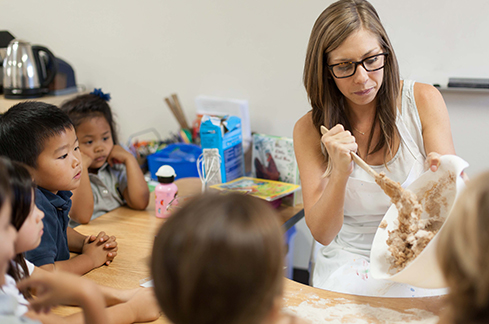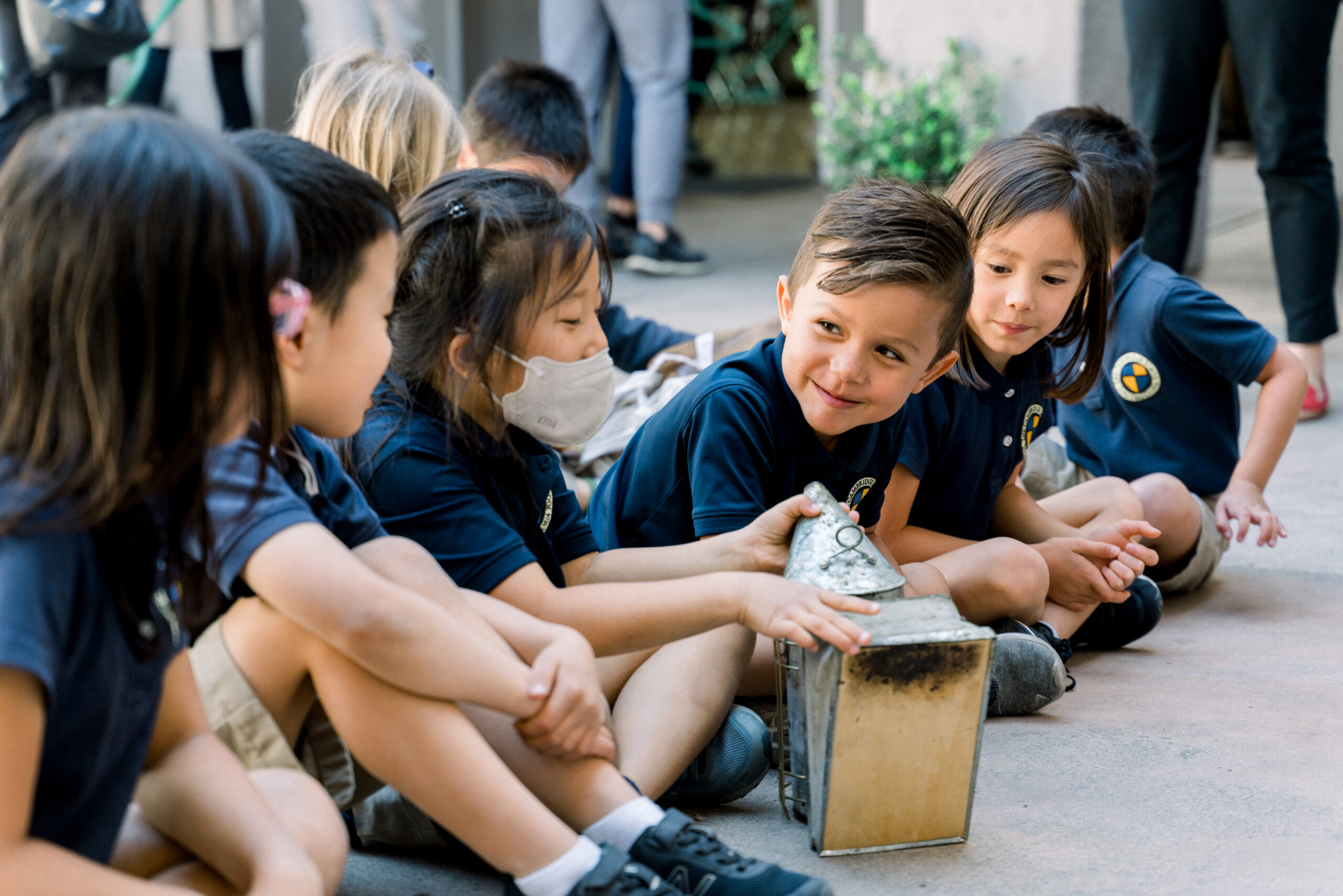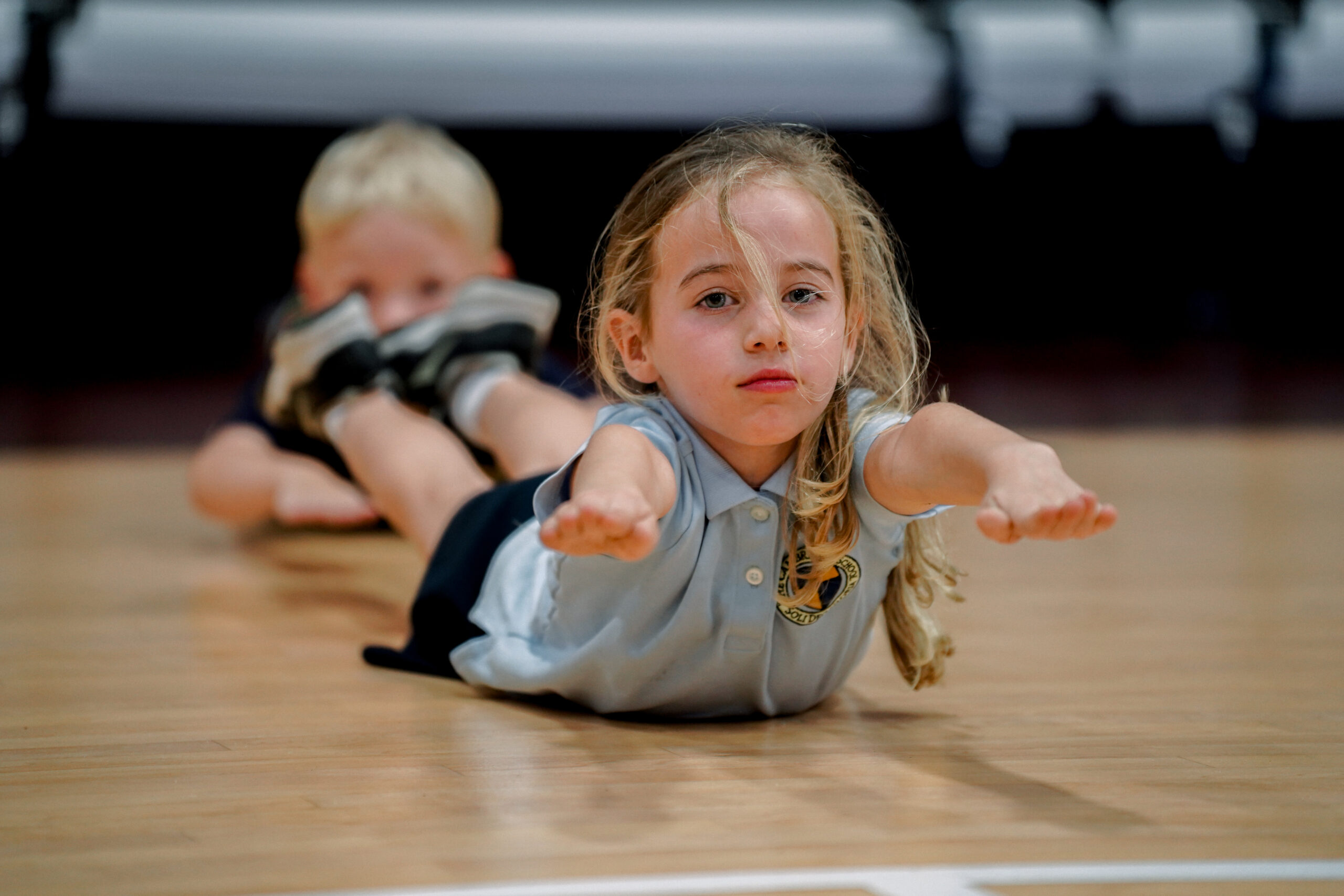Grammar School
Kindergarten - 6th Grade
Classical Christian Elementary School vs. Traditional Elementary Schools

In classical Christian education, elementary school is referred to as the Grammar School which embodies a unique and distinct approach to learning based on the classical Christian tradition. This approach prioritizes active, multisensory learning, challenging curricula, and structured classroom environments that build a strong foundation for future studies. In stark contrast, traditional elementary schools rely on more passive forms of learning, such as lectures and textbook reading. They often provide a one-size-fits-all approach that fails to challenge students, they also employ loose and undefined structures across classes and grades. Classical Christian elementary schools offer a distinct and effective educational experience that distinguishes it from traditional elementary schools.
Multimodal Learning - Classical Christian Elementary School Comparison
One key difference between the classical Christian elementary schools and traditional elementary schools is the use of multisensory learning. In the Grammar School at Cambridge, students learn important information through songs, chants, jingles, and rhymes. They also use a myriad of visual aids, manipulatives, and engage in hands-on activities to reinforce concepts and engage the long-term memory. This approach helps students retain information more effectively, especially when combined with frequent review and repetition. In contrast, traditional elementary schools often rely solely on rote memorization and regurgitation, which can leave students struggling to deeply retain the information.
Challenging Curricula - Classical Christian Elementary School Comparison
Another distinguishing feature of the classical Christian elementary schools is the challenging curricula. At Cambridge, students in the early grades focus on mastering reading and math skills, which form the necessary foundation for future studies. The Grammar school introduces English grammar and Latin early on, enriching their vocabulary and reinforcing the students’ understanding of language structure. The curriculum furthers this foundation by providing robust studies of science, history, Bible, geography, art, music, Mandarin, and physical education. This approach ensures that students are well-rounded and prepared for advanced studies in the Logic and Rhetoric stages.
Structured Learning Environments - Classical Christian Elementary School Comparison
Finally, classical Christian elementary school thoughtfully curates structured learning environments. The Cambridge School's culture emphasizes order, peace, courtesy, and enthusiasm. The classroom guidelines are clear and enforced, which creates a safe and supportive environment where students can thrive. Students are encouraged to respect each other, and to take responsibility for their own learning. This contrasts with traditional elementary schools, which often have looser structures, leaving students feeling unsupported and without clear direction.
Grammar School Overview

The Grammar School at The Cambridge School consists of grades Kinder-6. The Grammar School can be described in terms of its pedagogy (teaching methods), curriculum, and culture.
How to Prepare for Early Education
Kindergarten through 1st Grade present a unique opportunity to prepare your child well for a new stage in life. It can be overwhelming and difficult to sift through best practices. That is why we have prepared a clear guide to ensure your child is best prepared for their early education experience.

Grammar School Pedagogy
During the Grammar School years, students are taught important information by means of songs, chants, jingles and rhymes. Historical facts and timelines, science facts, math facts (addition, subtraction, multiplication), Latin vocabulary, rules of grammar–all are taught using songs, chants, jingles, and rhymes.
The classical pedagogy also favors review and repetition, which occurs frequently, but without boring students, who love to sing various songs over and over again until it is a part of their deep, long-term memory.
Other traditional teaching methods are also present in the Grammar School, including: teachers reading to students, students reading in and out of class, math instruction with manipulatives, written assignments, direct instruction, discussion, and oral reports. The Grammar School has a multi-modal pedagogy as well–students learn by seeing (there are many visual aids of all types in each classroom), hearing (many songs and chants), and moving (children sing with hand and body motions). Therefore, students who are primarily visual, auditory, or kinesthetic learners all learn well at The Cambridge School.
Grammar School Curriculum
The Curriculum of the Grammar School is challenging, but well within the reach of students with average ability who put forth reasonable effort. Students in the early grades (Jr.K-2) focus especially on the subjects of reading and math–two subjects which must be mastered early on to ensure success later in the curriculum.
English grammar is introduced beginning in first grade, introducing students to the 8 parts of speech and basic sentence diagramming and classification. Latin is introduced in the Kindergarten. Latin is taught at a time when students are able to quickly learn language; the study of Latin both enriches their English vocabulary (50% of English words come from Latin) and reinforces their study of grammar.
Students in the Grammar School also study history, science, Bible, geography, art, music, Latin, Mandarin and PE.
Grammar School Culture
The culture of the Grammar School is one of order, peace, courtesy, and enthusiasm. Families and students that come to The Cambridge School are interviewed and screened to insure that respectful, courteous behavior is both taught at home and supported in the school. Our school and classroom behavior guidelines are clear and enforced so that students are secure in an environment that is safe and predictable, even while being lively and robust.
The Stages of Christian Classical Education
See Our Embodied Education In Action
We are excited to show you what this educational experience looks like. Meet our Living Curriculum teachers, interact with our vibrant students, and learn more about your family's place in this community of faith and learning.